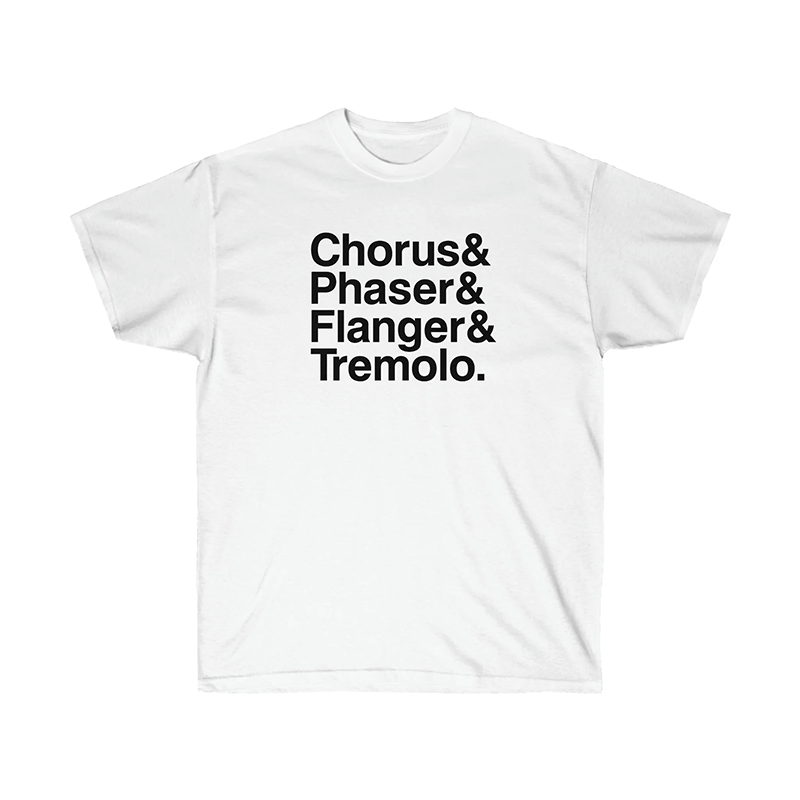 Today’s guest review comes to us from Corey F. – find him on Instagram (@ScrambleTheFitz), Facebook (Cantharone) and on his band’s website (Cantharone).
Today’s guest review comes to us from Corey F. – find him on Instagram (@ScrambleTheFitz), Facebook (Cantharone) and on his band’s website (Cantharone).
An extremely interesting and versatile take on bucket brigade type analog delay. The Lunar Echo from the now non-operational DMB Audio will keep you tweaking its knobs for hours on end. To start, it is a fairly normal analog delay with a max 500ms delay time. Within its five controls hide a seemingly endless array of delay sounds. All of the controls seem to heavily interact with one and other, and on top of that there are two delay types, two modulation types, an expression control for the space knob, an fx in so you can loop other effects into the delay circuit, AND a momentary “Take Off” switch to send it into self-oscillation at the push of a button. The repeats are nice and dark and when set high enough degrade into washes of noises instead of musical notes for repeats. It seems this thing has many layers of monsters inside it to discover.
Let’s talk controls:
Level: The middle knob, this guy controls the level of the effected signal in comparison to your dry signal.
Tails: This is the “feedback” or “repeats” or whatever the kids are calling it these days. Certainly the first instance I have seen where “Tails” has been used.
Space: This controls the amount of time between each delay. Your Delay Time, Yo.
Speed: Controls how fast (or extremely slow) the modulation function of the pedal effects the repeats
Depth: controls the depth of the modulation in the circuit.
The switch on the right control the delay type. “Hi-fi” gives you a more controlled and consistent delay. while it is certainly still nothing like a digital delay, it is clean-ish and lets you dial in more repeats without starting to self-oscillate. “Lo-fi” brings a slightly louder and nastier type of delay that loves to creep into monster noises, and self-oscillation.
The switch on the left controls modulation type. In the middle the modulation is bypassed. Flipping the switch up is the “tape” setting. This is where you’ll find the nice and subtle modulation to emulate old tape delay, or the speed it up and make it sound like your delays have a nice vibrato.
The downward setting on this switch is called “wrecked” and as you might assume, it does some crazy stuff. It opens up the range of the modulation from maybe a little larger than a whole step, to very large, over an octave it seems. So depending on how much depth you are working with, you will get wild pitch modulation and feedback that comes in and out with the delays. It is surprisingly musical, and with the level you can dial it back to sit underneath your input signal. This setting is especially reactive with the “take off” switch. You can really get some crazy “spaceship taking off-esque” sweeps underneath your playing, or just crank the level, get down on the floor, and nail that Take Off switch while you twist all the other knobs wildly to create some pretty amazing oscillation and drone type sounds.
The expression In: Lets you control the space knob with an expression pedal. I find this feature really neat for studio stuff, you can essentially throw it in and out of oscillation with your foot, so that can be really useful for more atmospheric and ambient sounds.
The Effects loop: To me, this is this pedals most important feature. You can loop other effects into the delay circuit so only the delays are being effected. I had never really experienced a delay that could do this before, but it really is what sold me on adding this to my collection. You can add a harmonizer in the loop and emulate the ever so popular “shimmer” type sounds, but in an analog delay, you can throw a fuzz in there and let your clean signal ring through while the delays scream back like mad. Or add reverb to make an excellent wash of ambience, this is my personal favorite trick. This way you can control a very large sounding wet signal with one foot switch
All in all, this is a very unique and flexible analog delay. it can do everything you would want this type of delay to do in the “conventional” sense, but then adds HEAPS of extras for you to play with. Right now I have it on my current board for my metal band, with my Caroline Meteore in the effects loop. It really lets me add a ton of ambience all at once for the washed out sections of our material, and then with one stomp I can remove then bringing me back to tight and cutting metal tone. I would highly recommend it to anyone who is interested in noise or drone, or even to studio engineers based purely on its flexibility as a delay.
GET EXCLUSIVE UPDATES, CONTEST INFO, SEE OUR LATEST DEMO VIDEOS AND MORE:

















